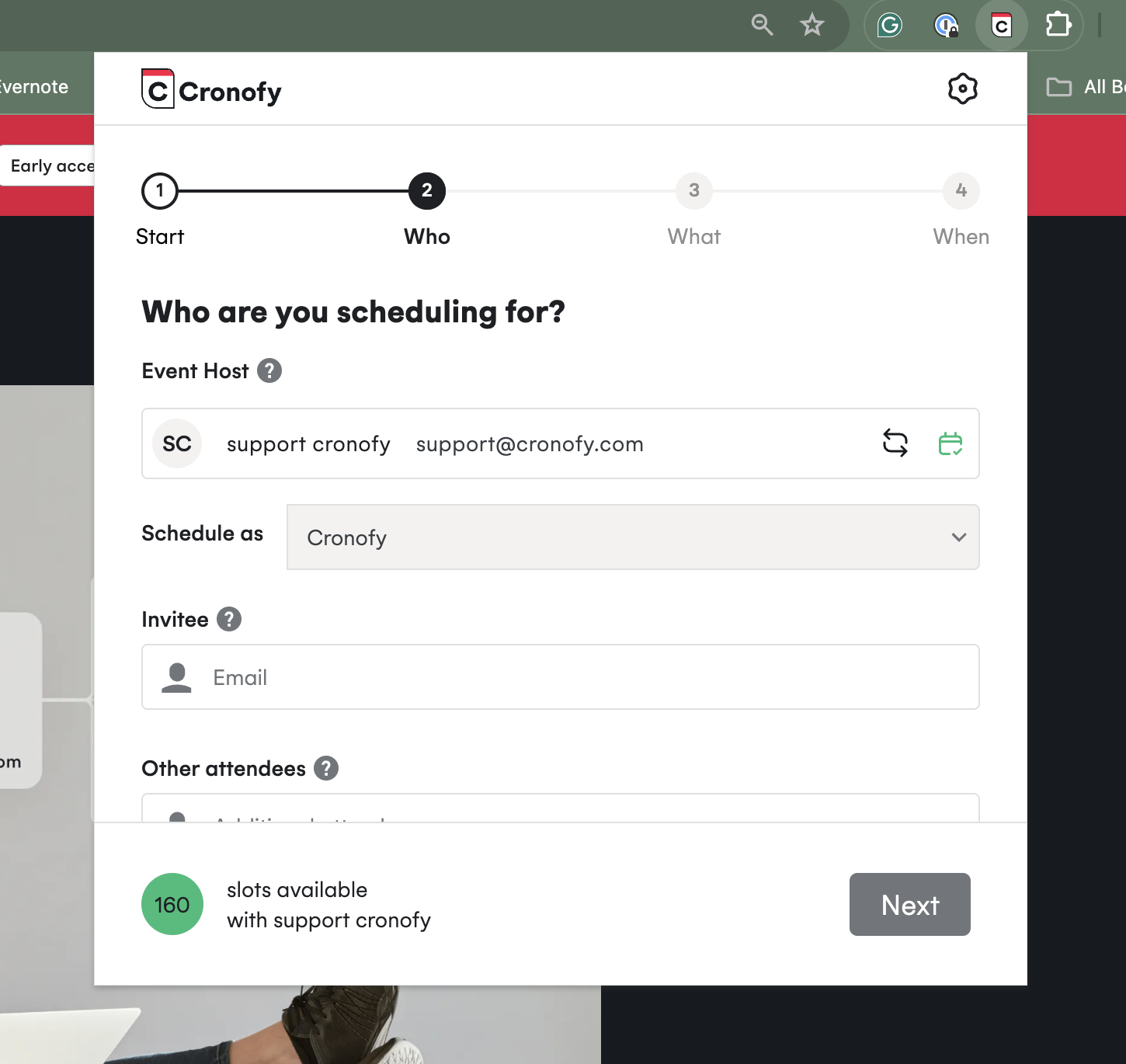Browser Extension
The Cronofy browser extension is designed to support scheduling from any web application.
For example:
- Recruitment software can allow a recruiter to quickly generate a scheduling link for a specific candidate.
- CRMs can allow a sales person to generate a personalized link for a prospect. Instead of a static link that forces the prospect to fill in their details when the sales person already knows who they are.
- Support systems can allow an engineer to generate a one-time link for a customer to book a call without making their calendar public.
It provides a quick and easy way to give users access to powerful scheduling capabilities whilst remaining in your application.
- You add simple, hidden markup to your web application.
- User installs the extension and follows the instructions to create a Cronofy account.
- Whenever the user clicks the extension when on one of your application’s pages, it’s pre-filled and ready to go.

It works by scanning the current page a user is on for any recognized contact information that could be used to initiate a scheduling request.
By adding hidden markup into their application web pages, developers can pass the relevant contact information to the extension so it is pre-filled and ready to go.
Hidden Markup #
The markup the browser extension is looking for is a form with a name of cronofy-contact.
For example:
<form name="cronofy-contact" target="#">
<input type="hidden" name="name" value="Afonso Amick">
<input type="hidden" name="email" value="afonso.amick@example.org">
<input type="hidden" name="organization-name" value="Example">
</form>The form does not need to be visible to the user so can be hidden.
The input values are then used to populate key fields in the browser extension. Supported field names are:
namethe name of the person the request is being sent to.emailthe email address of the person the request is being sent to.organization-namethe organization name of the person the request is being sent to.
None of the fields are mandatory in the form but the user will be prompted to complete mandatory fields in the browser extension pop-up if they’re not provided. For example name and email.
Multiple Forms #
At the moment the first instance of a form with name cronofy-contact will be used by the extension.